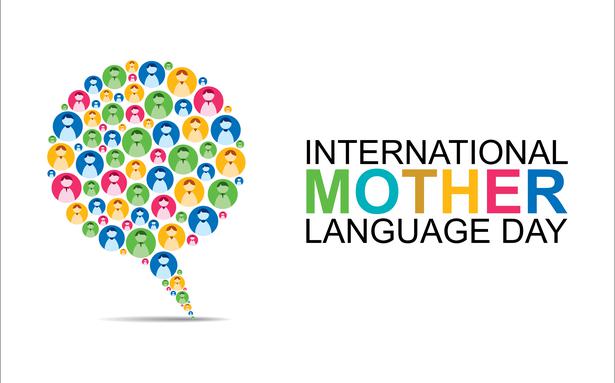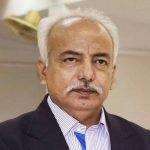
Any efforts towards a single language for world has not been successful yet because of environmental diversity of the globe. There is the need to promote mother languages and multilingualism in all the societies.
By Noor Ahmed Janjhi
Language is not only a cultural aspect of human and animal life but also a representation of individual and life. The life has a great potential that needs to be unearthed, shared and documented. The language takes lead to advance this cause of life and human society. Although defined differently, the role played by the langue is same in every culture. The language is such dimension of human culture that represents human imagery, concepts, ideas and thoughts by its systematic way and sequence. There are different definitions of the language but it is certain that it is the principle method of human communication, consisting of voices, words used in a structured and conventional way and conveyed by speech, writing or gestures. It is not only the way of the communication of an individual but also a strong vehicle to carry on the ideas and human study, observation and experience since time immemorial or since the first expression by human being.
The language plays three major roles. Firstly, it represents the internal dynamism of the thought process and personality of individual. The individual molds thoughts into words or gestures to express as per desire, wish, need or emergence. Sometimes spontaneous expression shares the actual representation of thoughts in time of anger, thoughtlessness or because of being naive. Otherwise, the expressed thoughts represent a desired picture according to the situation. Now the human culture, learning and education have reached at a developed stage so representation becomes much beyond the originality of thought. Secondly, the language is means of communication and coordination between and among the people subject to knowledge and understanding of the language. It connects people and societies to create a socio- cultural diversity. The communication develops into lending and borrowing process of words to each other. It creates a culturally diversified and multilingual society. Third role of the language is the cultural identity or social tagging. It is part of power process in human society. People, who rule the society, and deprived of everything associated with power, have the language as a tool of power identity. The language plays the role for identification, recognition and attacking in times of anger and helplessness. This role of the language becomes a universally accepted role of cultural identity. These three roles make the language a great human muscle and it can be said that it is the verbatim form of neurotic bed of human brain.
The grammatical structures and regularization, initially are congenital and take the shape of learned behavior in its advance form. It is all about the complicated phenomenon of the language, an integral part of not only human life but also of all the creatures. The seed of language is sown by the mother or first lap by inculcating ideas through phonemes. The phonemes or particles of voices are just like the sa, re, ga ma, pa dha ni or basic intonation of the language. The infant starts listening these voices as it steps into the world and then opens the eyes. It is very sophisticated communication between the two and then the number of people grows as the time passes by. The voices draw the compatible pictures on the layers of thinking as everything is put into shape of voice sensing like a shape or picture. Thus, mother tongue or the first language takes foundation in an individual. All the succeeding languages follow the intonation culture of the first language. It is also proved that proficiency of the other languages takes shape in the light of the first language.
 The role of mother tongue is too important to neglect in learning process. Primary education should be given in the first language so as the basic concepts of a learner may take a befitting shape. Mother tongues of world are recognized by UN organizations and the governments. However, many government don’t give the due importance to mother tongue of all the people residing under their governments. The language declared as the language of official business is called ‘official language’ and the language of coordination is called the lingua franca. Some governments declare national language too. Some declare one language as the national language and some notify more than one as the national languages. The languages have not developed in a way that they can express every idea and thought, so the body language or language of gestures help in this regard. People, able differently, also use the language of gestures.
The role of mother tongue is too important to neglect in learning process. Primary education should be given in the first language so as the basic concepts of a learner may take a befitting shape. Mother tongues of world are recognized by UN organizations and the governments. However, many government don’t give the due importance to mother tongue of all the people residing under their governments. The language declared as the language of official business is called ‘official language’ and the language of coordination is called the lingua franca. Some governments declare national language too. Some declare one language as the national language and some notify more than one as the national languages. The languages have not developed in a way that they can express every idea and thought, so the body language or language of gestures help in this regard. People, able differently, also use the language of gestures.
Considering the importance of mother tongue, International Mother Languages Day is celebrated by UNO under its arm of UNESCO, every year. It was the initiative by Bangladesh, was approved at the 1999 UNESCO General Conference and has been observed throughout world since 2000.
The observance of the day recognizes the importance of the mother tongue and linguistic diversity of the globe. The world has a wide range of languages ranging from 5000 to 7000. The linguistic diversity is increasingly threatened as some of the languages of the globe are going to disappear and every two weeks, a languages seems no more on the globe. The celebration of this day encourages linguistic and cultural richness and multilingualism as the languages are the most powerful tools for protecting and improving the tangible and intangible heritage of world. People after developing their skills in two or even three languages, do acquire a deeper understanding of how to use different languages efficiently. The observation of the day will facilitate to promote linguistic diversity and multilingual education, awareness of linguistic and cultural values throughout the world, to build unity centered on empathy, harmony and discussion. It is also necessary to establish the inclusive societies and the inclusion can be enhanced by languages multilingualism.
The theme of this year is “Using technologies for Multilingual Learning: Challenges and Opportunities.” We are living in a global world with a multilingual pattern of communication. All the languages of world are mother tongues per se. The strong and improved multilingualism can be achieved by developing the mother languages of all regions of world. The fact sheet of the ethnologies shows that “across South East Asia, India, Africa and South America the majority of the world’s languages is spoken. As a first language, 40 per cent of the world population has one of the eight most common languages, Mandarin, Hindi, Spanish, English, Bengal, Portuguese, Arabic and Russian’. The endangered languages, continent wise are as follows:
- Africa 46 out of 2092
- North and South America 170 out of 1002
- Asia 78 out of 22069
- Europe 12 out of 239 and
- Pacific 210 out of 1310.
Papua New Guinea, Indonesia, Nigeria, India and Mexico are the countries where more languages have official recognition.
English is the most important language of wider communication in the world but it has also been considered a threat for linguistic diversity.
There are 5 to 7 thousand languages in world. The precise number is not because of no clarity on language and dialect.
Every two weeks a language disappears taking with it whole cultural and intellectual legacy.
At least 43 percent of the languages spoken in the world are at risk.
Just a few hundred languages have actually been given a role in education systems and the public domain, and less than a hundred are used in the digital world.
Globally, 40 percent of the population in a language, they speak or understand, does not have access to education.
Focusing on global trends and use of technology for multilingual learning, Audrey Azoulay, Director-General of UNESCO, on the occasion of International Mother Language Day has shared its importance with a warning indication in the message as, “Technology can provide new tools for protecting linguistic diversity. Such tools, for example, facilitating their spread and analysis, allow us to record and preserve languages which sometimes exist only in oral form. Put simply, they make local dialects a shared heritage. However, because the Internet poses a risk of linguistic uniformization, we must also be aware that technological progress will serve plurilingualism only as long as we make the effort to ensure that it does”.
 Every aspect of society has been influenced by the Digitalization process. The use of different sophisticated tools and techniques have increased quantity and frequency of output and outcome. Learning and teaching process utilizes technology during entire educational process. Language learning has become easier than before because of the availability of required material and audio-visual aids. It facilitates the teachers to adopt classroom actives easily and enhances language learning process rapidly. Language laboratories, computerization, multimedia devices, mobile phones, audio-visual effects, EdTech solutions and social have brought a paradigm shift in language learning. Translating software helps to dig out the options for moving ahead. All these processes facilitate Multilingualism and easy way to learn languages. Despite the technological support, some language are lagging behind and become endangered and end in an extinction. The very structure of the languages is going to be changed and the sound system of pronunciation faces many challenges. The quality also has suffered because of the technology. It is because of the dictation by market forces. Only the languages of market are surviving and swallowing the other languages. All the people of globe have no uniformity in the use of technology. The global population is divided into different zones according to economy and the related considerations. The control of technology is in a few hands and most of the people still dream for use of technology to improve their lifestyle, learning processes and language education. Multilingualism reflects diversity of the linguistic profile of world rather than a uniformity. The unity and diversity go hand in through a natural cycle while the diversity and uniformity are inversely proportional. Therefore, any efforts towards a single language for world has not been successful yet because of environmental diversity of the globe. There is the need to promote mother languages and multilingualism in all the societies in a way that a global diversified cohesion may be developed for sustainable peace and prosperity of world.
Every aspect of society has been influenced by the Digitalization process. The use of different sophisticated tools and techniques have increased quantity and frequency of output and outcome. Learning and teaching process utilizes technology during entire educational process. Language learning has become easier than before because of the availability of required material and audio-visual aids. It facilitates the teachers to adopt classroom actives easily and enhances language learning process rapidly. Language laboratories, computerization, multimedia devices, mobile phones, audio-visual effects, EdTech solutions and social have brought a paradigm shift in language learning. Translating software helps to dig out the options for moving ahead. All these processes facilitate Multilingualism and easy way to learn languages. Despite the technological support, some language are lagging behind and become endangered and end in an extinction. The very structure of the languages is going to be changed and the sound system of pronunciation faces many challenges. The quality also has suffered because of the technology. It is because of the dictation by market forces. Only the languages of market are surviving and swallowing the other languages. All the people of globe have no uniformity in the use of technology. The global population is divided into different zones according to economy and the related considerations. The control of technology is in a few hands and most of the people still dream for use of technology to improve their lifestyle, learning processes and language education. Multilingualism reflects diversity of the linguistic profile of world rather than a uniformity. The unity and diversity go hand in through a natural cycle while the diversity and uniformity are inversely proportional. Therefore, any efforts towards a single language for world has not been successful yet because of environmental diversity of the globe. There is the need to promote mother languages and multilingualism in all the societies in a way that a global diversified cohesion may be developed for sustainable peace and prosperity of world.
_________________
 Noor Ahmed Janjhi is a senior educationist based in Desert District Tharparkar Sindh. He is author of several books in Sindhi and English on folk literature including two poetry books.
Noor Ahmed Janjhi is a senior educationist based in Desert District Tharparkar Sindh. He is author of several books in Sindhi and English on folk literature including two poetry books.